 |
 |
 |
| Lola Lola Marlene Dietrich |
Professor Rath Emil Jannings |
The Magician |
| Released by Paramount Pictures | Directed by Josef Von Sternberg |
||
Proof That It’s a Pre-Code Film
- Our lead singer, Lola Lola, has what men want, and is more than willing to pass it along.
The Blue Angel: Destroyed by Love Again
“Tell me, what do you come here for?”
“The same as you, Professor.”
Look, I can tell you that if you’re watching a German film from the 20s and 30s, the odds of it being a happy-go-lucky saga of human kindness are pretty low. That The Blue Angel is unabashedly nihilistic wouldn’t be much of a shocker either. It’s a movie where all of life is a demeaning circus, where happiness is a fool’s errand. Survival and debauchery are the only pleasures, and self respect is barely worth a spit in the face.
Germany just wasn’t doing so hot. Things were about to get worse. Director Josef von Sternberg, returning to his home country after a number of thundering, artful successes in America with movies like Underworld and The Last Command, returned to craft the country’s first sound film. Working with actor Emil Jannings, a megastar who he didn’t get along with, he realized his new film would need a starlet to make the central character of Lola Lola– a sexual sphynx– into the prize that would drive Jannings’ stuffy Professor Rath mad.
The solution (as it was and has been the solution to many things in life) was Marlene Dietrich. This is pre-Hollywood, which nowadays might simply mean they aren’t lit as well. Back in the 1930s, pre-Hollywood meant Dietrich was homely. Her hair is a cluster of knots, her figure bedecked in goofy burlesque outfits that, in typical German fashion, broadcast their status satiric grotesqueries than anything resembling American eroticism. But it’s Dietrich’s eyes and her smile, that keen combination of playful desire, sardonic disinterest, and distant allure that made Dietrich so fascinating– it’s there.
The story has Jannings’ professor, a pariah worthy of contempt to his students, decide to follow and punish any students who are visiting a nearby dive called The Blue Angel. While there, he encounters sexual dynamo and all-around-tease Lola Lola, who is irresistible despite treating him like a love struck kid. He sleeps with her, destroying his career as an academic when it’s discovered. He marries Lola and joins up with her group of traveling entertainers.
Spoilers.
Dignity is the only thing that matters to him, but five minutes into his honeymoon and he’s already on the ground, surrounded by naughty postcards of his wife. Soon, he’ll be selling them to disinterested bar patrons. It’s a short step there to the life of a clown. Not even one of the fun ones with the seltzer– no, he’s the kind that gets humiliated for shits and giggles. Years down the line and he’s become a shadow of himself– a trip to his former hometown and his wife’s dalliance with the new handsome strongman sends him over the edge, a man destroyed by dropping his facade of honor for one fateful, pleasurable night.
End spoilers.
Portents abound for the poor man, and Von Sternberg, undeniably one of the great visual artists of early 30s cinema, really hammers in the screws on the Professor. Rath is Rodney Dangerfield lacking even the respect of not having any. The opening act, where a sad mute clown wanders aimlessly between scenes as Rath’s confusion at the sinful den grows is a nasty bit of foreshadowing, a hopeless impotent spirit unable to make him see the ghoulish nightmare circus he’s about to enter. Then there’s Sternberg’s shots, which makes the German underworld look horrific in the best tradition of Caligari. The use of sound in the movie is astounding for such an early movie, and the camera hardly seems hampered by the limitations of the time. That being said, Sternberg only went up from here. And, of course, the matching tracking shots from when Rath is fired and where he ends up in the end, the idea that once you’ve sacrificed your respect for desire, you no longer deserve any fulfillment at all.
Lola Lola remains a bit of a cipher, which is probably where much of the film’s lasting appeal comes from. Does she intentionally humiliate him? Or is she a mere nymph, unable to understand him in any way while his blustery honor dissipates his self respect? The movie can be read a lot of ways, whether it’s in how useless and pathetic academics are outside their own fiefdoms, or just in the impenetrability of the feminine veneer.
Or maybe it’s that dead songbird at the beginning. It didn’t sing much any more anyway. So many films are made about a reawakening, that belief Americans have that they can be shaken out of complacency and sadness and reborn into a world of grace by way of a beautiful new lover or sudden adventure. The Blue Angel hints at the naivete of hope. Well, ‘hints’ may be too light of a word.
That’s what made it rough. There’s really nothing optimistic here, and it plays like a handful of silent melodramas where the point was simply to torture the lead until they broke. It violently shakes the viewer, and I can’t say I’ve ever been a fan of those kinds of films. The nearly 2 hour run time on The Blue Angel is just as punishing as the film itself, as we watch Rath’s downfall in in long, lingering shots. It’s just one long spiral.
The moments the film shines– yes, when Dietrich wobbles “Falling in Love Again” both times is easily up there– certainly make it apparent why the film is a classic. But, while I can appreciate the amount of craft that went into it, the only impulse is to punish a man for his foolish sexual fling. It’s beautiful, it’s smart, but it’s tough to stomach.
Gallery
Click to enlarge. All of my images are taken by me– please feel free to reuse with due credit!
Trivia & Links
- Lucky for all of us, Marlene Dietrich’s screen test for the role of Lola Lola has survived and, bonus, it’s up on YouTube. This is definitely one of those things where you can see a star blooming.
- Strictly Film School points out the movie’s historical context:
Most of the scenes occur at night and in cabarets, emphasizing the dark, sordidness of his situation. From a historical perspective, The Blue Angel was filmed during the Weimar Republic when the German government, caught in a stranglehold over war reparations, was on the verge of collapse. The film echoes the cynicism and hopelessness of the times. As a result, the story is extremely caustic and unforgiving: the desperate voice of a country in turmoil.
- This one’s history is interesting, of course. Sternberg was one of Paramount’s major directors when he headed to Germany with Jannings, who’d won an Academy Award for his last performance in a Sternberg movie, to make this film. From TCMDB:
Inspired partly by the erotic drawings of Belgian artist Felicien Rops, Sternberg decked out his heroine in silk stockings, high-heeled shoes and a top hat. The combination of actress, costume, music and Sternberg’s legendary lighting skills created an icon which resonates even today. Jannings, who still imagined himself star of the film, became jealous of the intimate relationship between Sternberg and Dietrich and the cinematic attention lavished upon her, throwing tantrums on the set and at one point threatening to strangle the leading lady. Although Jannings continued to act in films through the Nazi era (which brought him shame after World War II), The Blue Angel marks his last great moment as an actor; surely his jealousy arose in part because he knew he was being eclipsed.
- Speaking of the Nazis, they banned this film in Germany in 1933.

But it has such rosy views of the German people…
- At Edward Copeland’s Tangents, he goes in deep, and also explains all of the different versions of the film that cropped up over the years.
The differences in the two versions of The Blue Angel extend beyond just the language the actors in which the actors speak. When it premiered in Germany on the night of March 31, 1930, it ran 106 minutes. The raves (in addition to being able to see the as-yet-unreleased English-language version) prompted the U.S. studio Paramount to lure both von Sternberg and Dietrich, who by then were lovers, to the U.S. They made and released Morocco, which earned Dietrich the only Oscar nomination of her career for best actress, before The Blue Angel had its U.S. debut. When the English version was released in December 1930, it only ran 99 minutes, as filmed. The German version didn’t play in the U.S. until 1947 and to emphasize Dietrich at the expense of Jannings’ lead character (and the story itself), the film was cut to 90 minutes. It wasn’t until 2001 that a new German language print, made from original negative material, restored it to 106 minutes and was re-released. Ironically, for many decades, the English-language version became considered lost until a print was discovered in a German film archive, restored and shown in 2009.
- The English version of this movie was the first film submitted to the Production Code Administration in December 1930. Jason Joy passed it, but not without controversy.
- Roger Ebert likes the movie, but puzzles on it a bit more than I did:
The puzzle throughout “The Blue Angel” is why Lola Lola marries the sad, besotted professor. It appears they have a sex life, at least for one night, although it is not appealing to imagine its nature. There are times when she seems fond of him, times when she is indifferent, times when she is unfaithful, and yet she has a certain stubborn affection for this pathetic figure. Perhaps he acts as a front for her shadow life of discreet prostitution; perhaps, in a world that regards her as a tramp, she values the one man who idealizes her.
Dietrich in any event never seemed to embody romance; the sexual identity she offered, in film after film, was that of a predator, disillusioned by men, satisfying her physical needs but indifferent to their providers. She seems to have all of the equipment of a woman except for the instruction manual[.]
The final humiliation of the professor is agonizing and protracted, and Siegfried Krakauer, in his study From Caligari to Hitler, found it one more example of the way German movies mirrored their society in humiliating intellectuals and glorifying the physical. You can glimpse the sadomasochism of the Nazi pose in the strange relationship of Professor Rath and Lola Lola.
- More on that connection from Bosley Crowther (as well as some sweet stills) from Doctor Macro:
Some critics say The Blue Angel is important primarily because it so presciently shows the immaturity and sadism of the German middle class. It does this, beyond any question. In its singular contemplation of the sudden disintegration of a pillar of bourgeois society under the quick, corrosive influence of a strong application of gutter sex, it starkly reveals the imperfection and fraudulence of the facade of middle-class decency and discipline that is ponderous hero represents. It sourly suggests the soggy culture out of which Nazism oozed. And in the sadistic frenzy of the schoolboys to torment and destroy their hated teacher after they have witnessed his weakness for the cabaret girl, we may spot the incipient viciousness of later Hitler Youth.
But I find The Blue Angel most engrossing because of the opening it makes upon the whole darksome, subterranean area of psychoneurotic sex. Where the custom in silent pictures was simply to treat the primal urge as a powerful but usually unholy and sinful appetite that overwhelms men and women by its sheer physical rush and urgency, the revelation in this picture is a sickly image of sex as a passion mixed up with deep obsessions to dominate and get revenge. And where the evil of it in the silents was mainly its immorality, the evil of it in The Blue Angel is its corruption into a social disease that infects the aggressions of people and causes them to act in debased and vicious ways.
Awards, Accolades & Availability
- There are two versions of this film. The German version (which looks great) can be rented over at Amazon for two bits. The English version, which doesn’t look so hot, is currently up on YouTube. You can also get a blu-ray that has both versions on it from Amazon, where it presumably looks pretty swell. You can get a rundown of the blu-ray’s special features at the BBC.
More Pre-Code to Explore



















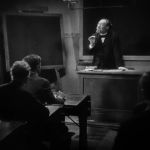








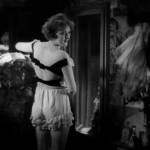



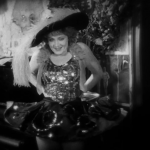
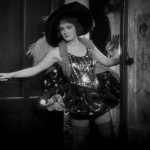



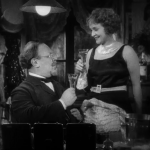

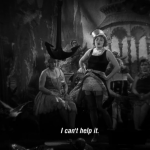


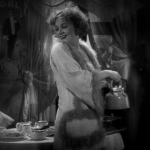


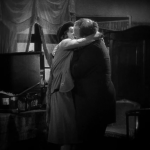
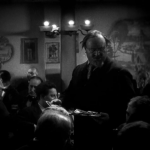





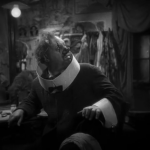











6 Comments
Judy · April 1, 2016 at 3:43 am
Wow, indifferent? For my money one of the all-time greats, in both versions though the German is the best. I’m dubious about the often-repeated claim that the English version was lost for many years, as I saw it on the big screen in 1980 – I remember it vividly as it was the first time I’d ever seen a b&w film at the cinema and it absolutely blew me away.
I wrongly assumed for the next 25 years or so that it had only ever been made in English, until I belatedly discovered there were two versions! Anyway, surely it can’t have been lost after that?! Unless maybe the last print wore out?
It was also released on DVD in 2002, so I can only think either the date is wrong or a better print resurfaced in 2009. I do have the fantastic Masters of Cinema blu-ray but haven’t watched all the extras, so maybe one of them will shed some light on this puzzle.
Danny · April 13, 2016 at 2:23 pm
I can admire the artistry of it even if I didn’t quite connect with me. Not 100% on the print history, it may be that the German version is just considered the superior now and gets all the play.
Terence · April 1, 2016 at 8:24 am
>>>Perhaps he acts as a front for her shadow life of discreet prostitution; perhaps, in a world that regards her as a tramp, she values the one man who idealizes her.<<< I think Ebert is spot on in this though it is clear that the Dietrich character enjoys teasing and humiliating Jannings.(I love the scene with the powder puffs.) Of course, we modern viewers don't see the film as contemporary U.S. audiences saw it since the English language version is almost never screened these days. You'd have to check but I think the movie came about because of Paramount's distribution deal with UFA after Variety and the Last Laugh had been successful. I like Jannings and I've always dug this film; as grotesque as it is, As an actor, Jannings really belonged to the silent era and a particularly broad Germanic style of acting. Sternberg (Viennese, not German) also directed him in The Last Command, a silent melodrama about Hollywood and the Russian revolution that is worth watching.
Danny · April 13, 2016 at 2:26 pm
Yeah, I remember liking The Last Command, and I think Jannings’ presence is a remarkable one. But I’d say half his performance here comes from the direction– I can see why it’d be a problem after a point if it doesn’t translate to other filmmakers.
JennyG · April 2, 2016 at 4:04 am
Oh man, to me The Blue Angel is an absolute powerhouse of a film about power. When Rath meets Lola, he has profound social power, because he is a particularly stern and serious professor and because professors were particularly honored in the German tradition. He uses that privilege to protect Lola from a drunken creep and displays his influence with the police. His love for Lola is flattering in its unlikelihood and promises the kind of support that is useful to Lola in her world. But the job was the source of that power, so when he loses it from his association with her, he loses himself. We don’t see the disintegration of their marriage–it happens offscreen in the missing four years–but it’s obvious that life outside of academia and in the cabaret kills Rath’s spirit. I don’t think Lola is a mystery at all–she brought Rath into her dionysian world, which she can navigate and he, it turns out, cannot. Lola’s second rendition of “Falling in Love Again” makes pretty clear that she’s become a hard survivor who no longer wants marriage. To me and I daresay to Sternberg, the truly awful people are the middle class inhabitants of Rath’s hometown who yearn to see Rath humiliated. I don’t think they are meant to reflect satirically the viewers because their reaction and our reaction to what we are both witnessing is so divergent. And the profound tragedy of it all makes the film the opposite of nihilistic: I think Angel makes us think about the social sources of our own personal power and revalue them.
Danny · April 13, 2016 at 2:30 pm
This is great! Excellent points. Thank you for sharing it!
Comments are closed.